
Breadcrumb
- News and Events
- News
- Content
- The sky is not the limit
null The sky is not the limit
Researchers look to team of astronauts to help answer important questions about chronic pain and sleep
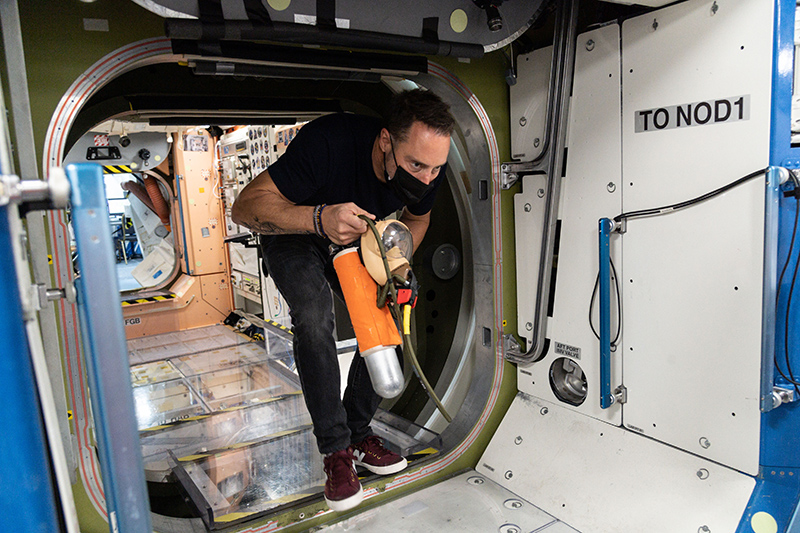
By Maureen McCarthy
Source: Chez nous (Montreal Children’s Hospital)
When Dr. Pablo Ingelmo, Director of the Edwards Family Interdisciplinary Centre for Complex Pain at the Montreal Children’s Hospital (MCH), was asked to take part in a new research project, he knew immediately it was the opportunity of a lifetime. The reason? The research would be part of an upcoming space mission.
“The knowledge we have about pain in space and the relationship between microgravity and pain is so minimal that it’s almost non-existent,” says Dr. Ingelmo, who is also a member of the Child Health and Human Development Program at the Research Institute of the McGill University Health Centre (RI-MUHC).
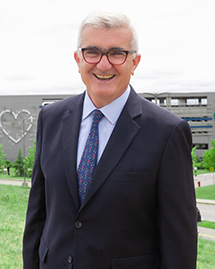
It was easy to recruit his colleagues for the study. “All of them are so knowledgeable about their specific areas of pain research but this opportunity is so different that everyone quickly agreed to take part in it.”
Like Dr. Ingelmo and his colleagues, Dr. Evelyn Constantin and her team are also conducting research as part of the upcoming space mission. Dr. Constantin has spent her career studying sleep in children, and as a clinician-scientist at the RI‑MUHC and Director of Pediatric Sleep Medicine at the MCH, she has developed a unique research program with interprofessional collaborations to explore sleep issues in children with chronic conditions, including neurodevelopmental disabilities and metabolic conditions. The space mission is providing her the opportunity to study sleep in a completely new environment.
The Ax-1 mission: ready for take-off
Montrealer Mark Pathy, a long-time supporter of The Children’s Foundation and member of its Board of Directors and its Unexpected Ways to Heal campaign cabinet, is part of a four-person team taking part in Ax-1, a space mission organized by Houston-based Axiom Space. It will be the first fully private mission to visit the International Space Station (ISS). The four astronauts have been training at NASA’s Johnson Space Center in Houston and will conduct approximately 25 experiments while onboard the ISS to gather critical data in human research, life and physical sciences, technology demonstrations, and Earth observation, with the goal of expanding the applicability of research into microgravity, the condition in which people or objects appear to be weightless.
The pain management research team
The change in gravity in space affects the human body in ways that aren’t fully understood yet. To date, only two studies have been conducted on pain experienced by astronauts specifically, and both showed that microgravity in space can heighten the pain perception in 50 per cent of astronauts.
“In order to understand why 50 per cent of astronauts experience pain, we must first understand why the other 50 per cent don’t,” explains Dr. Ingelmo. “We are not looking just for the abnormalities in people who have pain, but we want to understand why some people, even after an insult like microgravity, get better. Our hope is that the information we collect will advance our research to help people here on earth.”
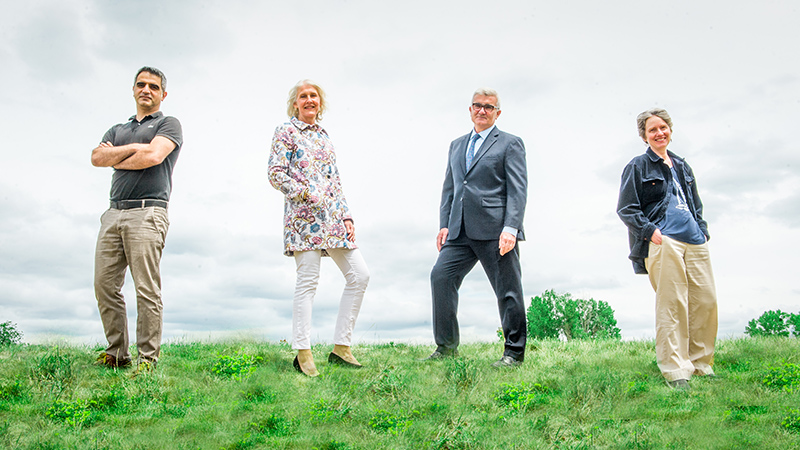
For the pain management component of Ax-1’s research, Dr. Ingelmo assembled a team of experts including Dr. Luda Diatchenko, Dr. Jean Ouellet, Svetlana Komarova, PhD, Lisbet Haglund, PhD, and Maryse Fortin, PhD, whose affiliations include the MCH, Shriners Hospital for Children, McGill University’s Faculty of Medicine and Health Sciences, the Alan Edwards Centre for Research on Pain, the RI-MUHC, and Concordia University. Dr. Ouellet, Svetlana Komarova and Dr. Haglund are also researchers at the RI-MUHC.
Marie Vigouroux, Clinical Research Coordinator in the Chronic Pain Service at the MCH, Eric Zimmerman, a psychology student at McGill University, and Kacper Niburski, an anesthesia resident at University of British Columbia, round out the team.
Approaching the questions from multiple perspectives
The pain researchers are trying to answer three main questions, broken down into six different experiments: Can a short trip to space change pain sensation? Can a short trip to space influence genomic processes of bone physiology and inflammation in response to pain? How does a short trip to space affect bones, muscles and ligaments?
The Ax-1 astronauts will go through a series of tests before and after the space flight, which include questionnaires, blood tests, MRIs, and measuring their pain thresholds. The researchers will then compare the results from before the space flight to right after the flight, then three months later to determine if there are any changes to the astronauts’ bodies.
The researchers assembled by Dr. Ingelmo have expertise in a range of subjects including spinal pain, genetic mechanisms of pain, bone cell and tissue pain, intervertebral disc degeneration and pain, and musculoskeletal spine imaging and rehabilitation.
“The novelty of our project is that we’re trying to answer the questions from different perspectives in a single project so in reality, it’s six studies in one,” says Dr. Ingelmo. “Because we will share the data in this study, we are going to get answers faster.”
The connection between poor sleep and poor health
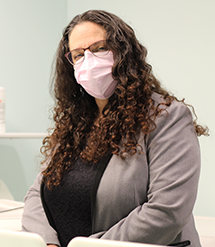
Dr. Constantin and her research team are leading another experiment being conducted on Ax-1 related to sleep in space and the microbiome. The human gut microbiome comprises trillions of microorganisms, and the early childhood years are critical to establishing a healthy microbiome. Poor sleep is associated with abnormal gut microbiome, and is linked to a number of diseases, including obesity and asthma, and increased cardiometabolic risk, such as experiencing a cardiovascular event or developing diabetes.
The Ax-1 astronauts are helping Dr. Constantin and her team by providing data from the space mission.
“We are trying to understand if the unique environment of the space mission can affect the astronaut’s microbiome, and if the space environment creates any association between sleep, cardiometabolic risk factors and their microbiome,” says Dr. Constantin. “And since space travel can lead to jetlag, we are also studying the astronauts’ sleep quality and quantity to describe the changes in sleep and circadian rhythm.”
All these factors will be studied before, during and after the space flight.
Research has shown that the quality and quantity of astronauts’ sleep are impacted during spaceflight, however the effects of a space shuttle environment and microgravity on sleep, microbiome and cardiometabolic factors have not yet been determined, and few studies have assessed sleep in space using objective sleep measures. This research represents the first study in space travel to assess the associations with sleep and microbiome at the same time, using objective medical devices to measure sleep.
Circadian rhythm and social jetlag
One of Dr. Constantin’s current research projects involves assessing sleep, diet and the microbiome in children, the first study of its kind in pediatrics.
“We are looking at the associations between sleep and glucose [sugar] intake, and measuring the child’s microbiome via stool samples,” explains Dr. Constantin. “We’re doing nutritional intakes with the children, assessing the quality and quantity of their sleep and looking at any associations with their microbiome.”
Another of Dr. Constantin’s studies is looking at preschool-aged children’s circadian rhythm, which is the body’s internal sleep/wake clock, and a newer concept called social jetlag, the discrepancy between a child’s sleep patterns on weekdays compared to weekends. Dr. Constantin hopes to gather information from the space mission on social jetlag.
“I’m interested to know if the changes in sleep patterns and environment between earth and space can also create this social jetlag entity, which will help us to gain further understanding about social jetlag and circadian rhythms,” she says.
For the space mission, each of the astronauts will keep a sleep diary, answer sleep-related questionnaires, and wear an actigraph wristband, which measures sleep: it records motion when the person is awake, and non-motion when they’re asleep.
“By wearing the actigraph a few weeks before the mission, then during and after, we hope to get a sense of their usual sleep habits, duration and quality to see if the space environment changes that in any way,” says Dr. Constantin.
The astronauts will also have blood work done at various intervals and their cardiometabolic risk factors will be determined through measuring body mass index, waist circumference, blood pressure, heart rate, and oxygen saturation among others. The research study will also look at stool microbiome diversity.
A full circle: from clinical pediatric work to research and back
Dr. Ingelmo says his co-investigators regularly share their findings with each other and the important clinical work being done in the Edwards Family Interdisciplinary Centre for Complex Pain at the MCH often incorporates research produced at the RI-MUHC and the Alan Edwards Centre for Research on Pain, which is world-renowned.
“What makes this project so interesting is that a pediatric hospital is leading research that we hope will lead to the development of new technology and treatments not just for children but for adults as well.”
Dr. Ingelmo says Mr. Pathy and his fellow astronauts are doing a great service by taking part in the pain research and sleep research. Dr. Ingelmo and his team plan to incorporate the information collected from the astronauts into animal models, which may then lead to applications in humans and eventually new treatments.
“They’re giving us their time before, during, and after the space mission to help us produce data to create new models of analysis for helping people with complex pain. We’re really grateful for their commitment to our study and in particular to the Montreal Children’s Hospital.”
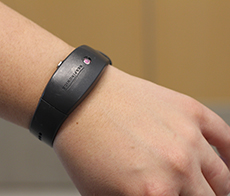
Dr. Constantin is enthusiastic about what lies ahead. As just one example, she cites the microbiome data they will collect. “I think any new research in microbiome is novel,” she says. “We’re working and collaborating on this with the McGill MI4 Microbiome Research Centre, which has done some space research, but a prospective study like this, which looks at information before, during and after the space mission, is unique.
“What we learn about the astronauts’ microbiome in space, in such a structured environment, will help us understand more about the links between a child’s microbiome and their sleep and overall health. The more we know about the microbiome, whether on earth or in space—it’s just an interesting new concept to assess the possibility of the microbiome being a snapshot of your cardiometabolic risk.”
Dr. Constantin’s co-investigators on the study are Drs. Patricia Li, Nicholas Brereton, Emmanuel Gonzalez, Ken Dewar, and Elise Mok, whose affiliations include the MCH, the Child Health and Human Development Program at the RI-MUHC, the Department of Biology at Université de Montréal, the Canadian Centre for Computational Genomics (C3G) based at McGill University, and the Department of Human Genetics at McGill University. In addition, Marie Vigouroux, Clinical Research Coordinator on this study, has been instrumental in helping move the project forward.
─First published in the March 2022 issue of the MCH Employee Newsletter, Chez nous